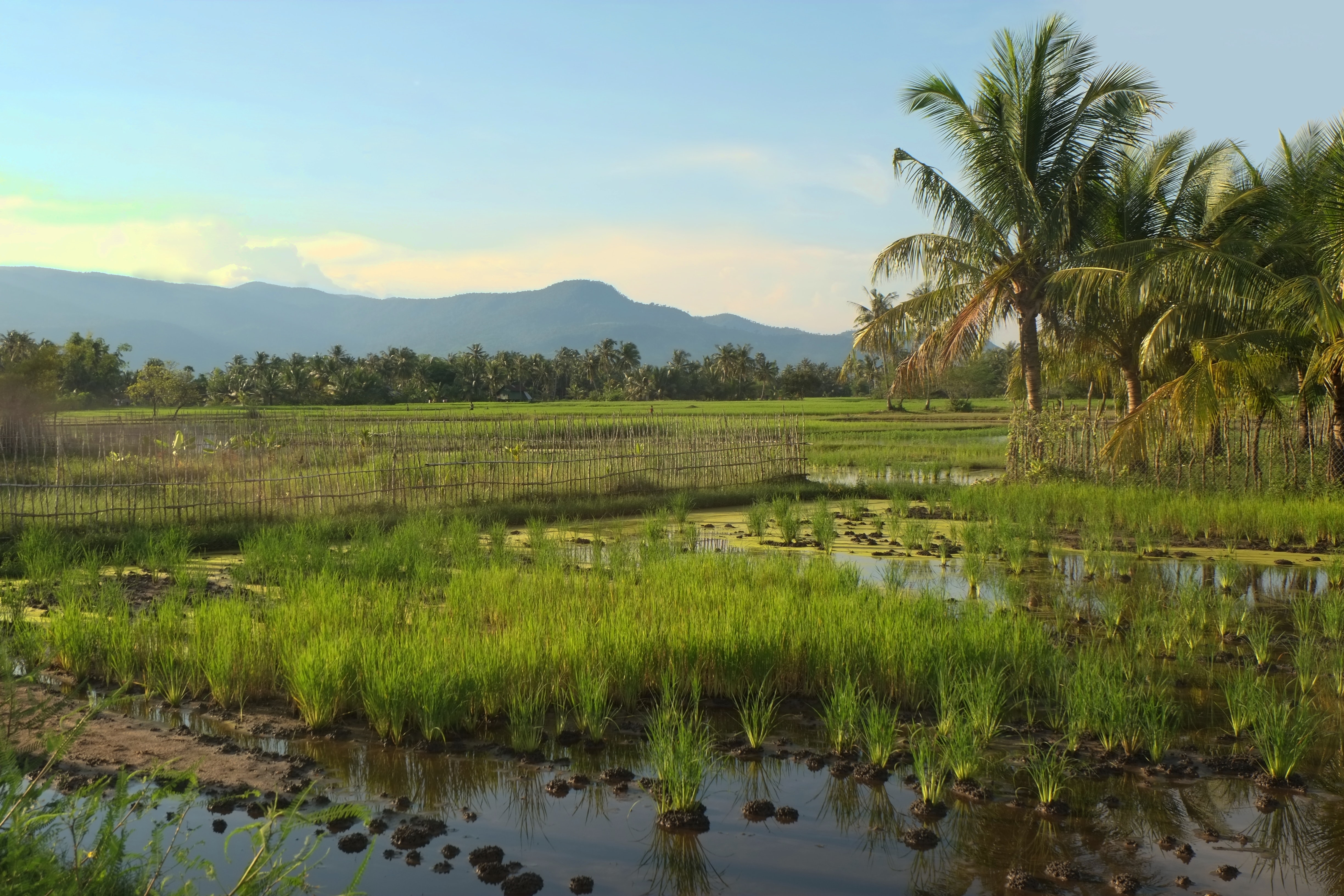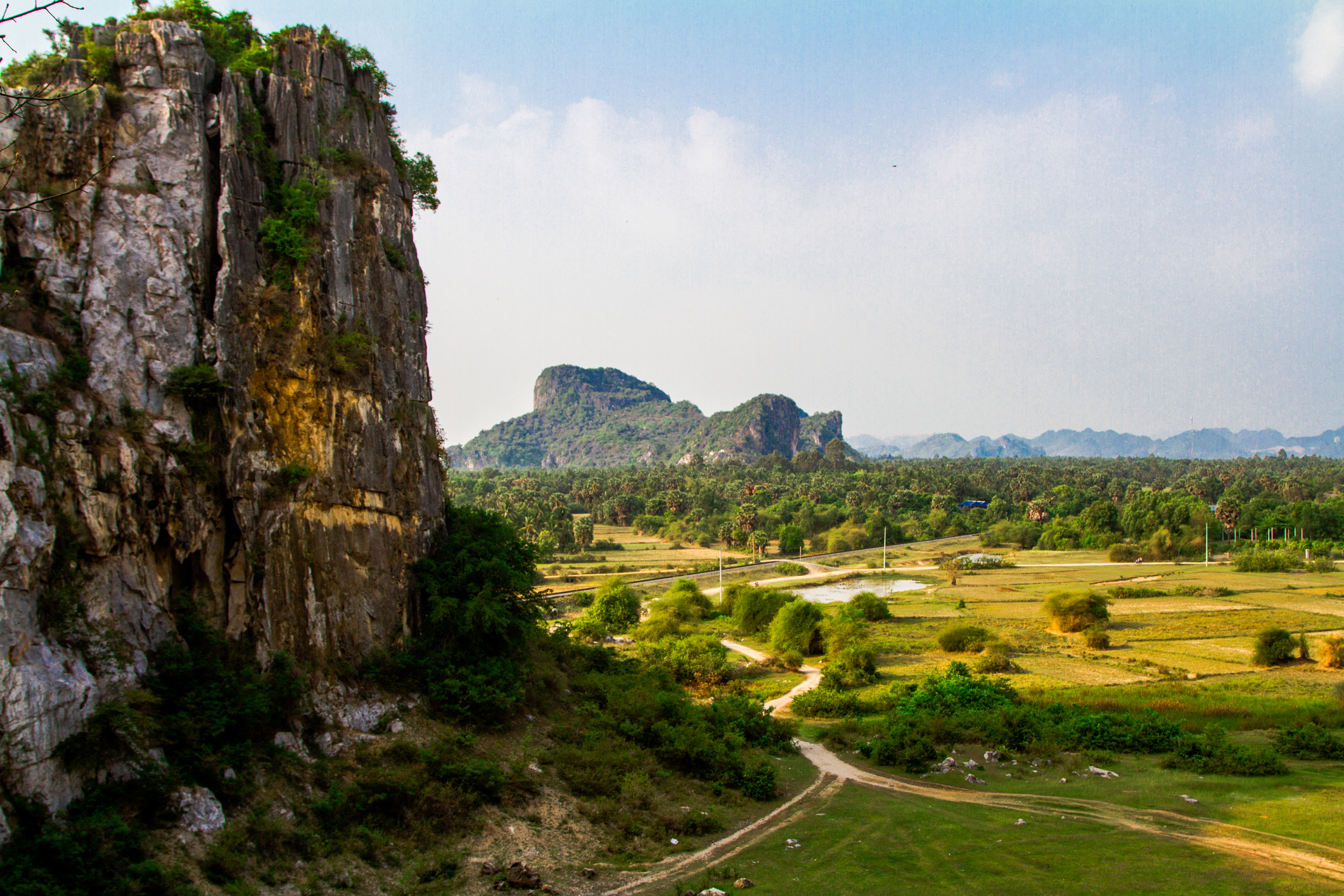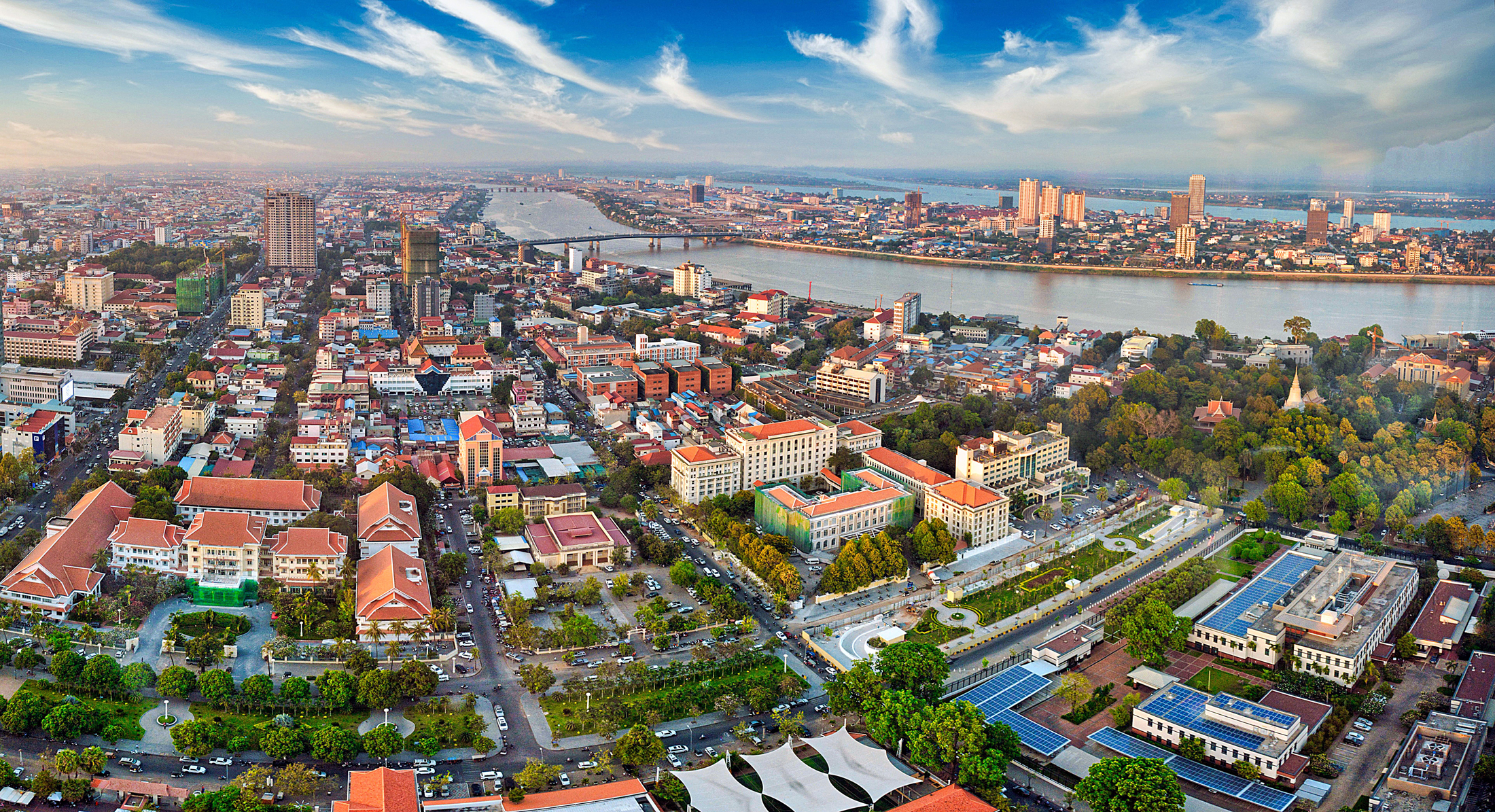
Kampot
World-famous for its tongue-tingling pepper, sleepy Kampot is the jumping-off point for adventures in Bokor National Park, and a wonderfully chilled-out place to relax for a few days.
Before the 1950s when a deep-sea port was established at Sihanoukville, Kampot was Cambodia’s main port, overseeing a booming export trade in rubber, rice and corn throughout the 19th century. It’s difficult to imagine today, as you watch the fishermen unloading their catch at the morning market, but the remnants of this prosperous past are still evident in its dilapidated French-colonial villas and wooden-shuttered Chinese shophouses, which have managed to survive both the Khmer Rouge and later development — unlike so many Cambodian towns.
Its importance might have waned, but as far as we’re concerned, Kampot has everything you could possibly wish for in a town. It has a palm-shaded riverfront lined with chilled-out bars and chic cafés. It has plantations producing the best black pepper and durian fruit in the world. It has opportunities galore for adventure sports, including kayaking, stand-up paddle boarding, rock climbing and sailing. Best of all, it has Bokor National Park, rising dramatically from the coast to more than a kilometre above sea level and extending deep into the mountains beyond. A ghostly abandoned casino and a pock-marked Catholic church are all that remain of the French colonial hill station that was built here in 1925, and these spooky ruins boast spectacular views over the surrounding rainforest — home to leopard cats, gibbons, sun bears and civets.



